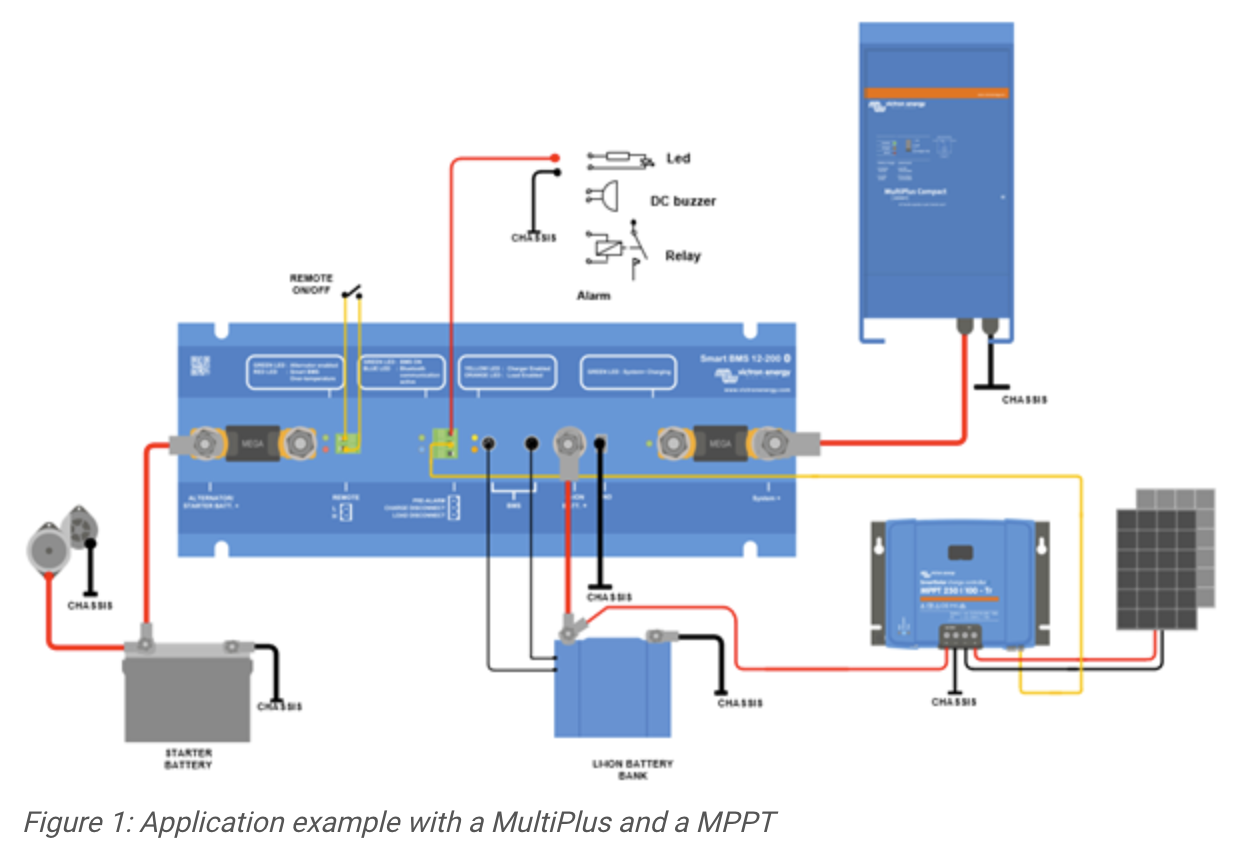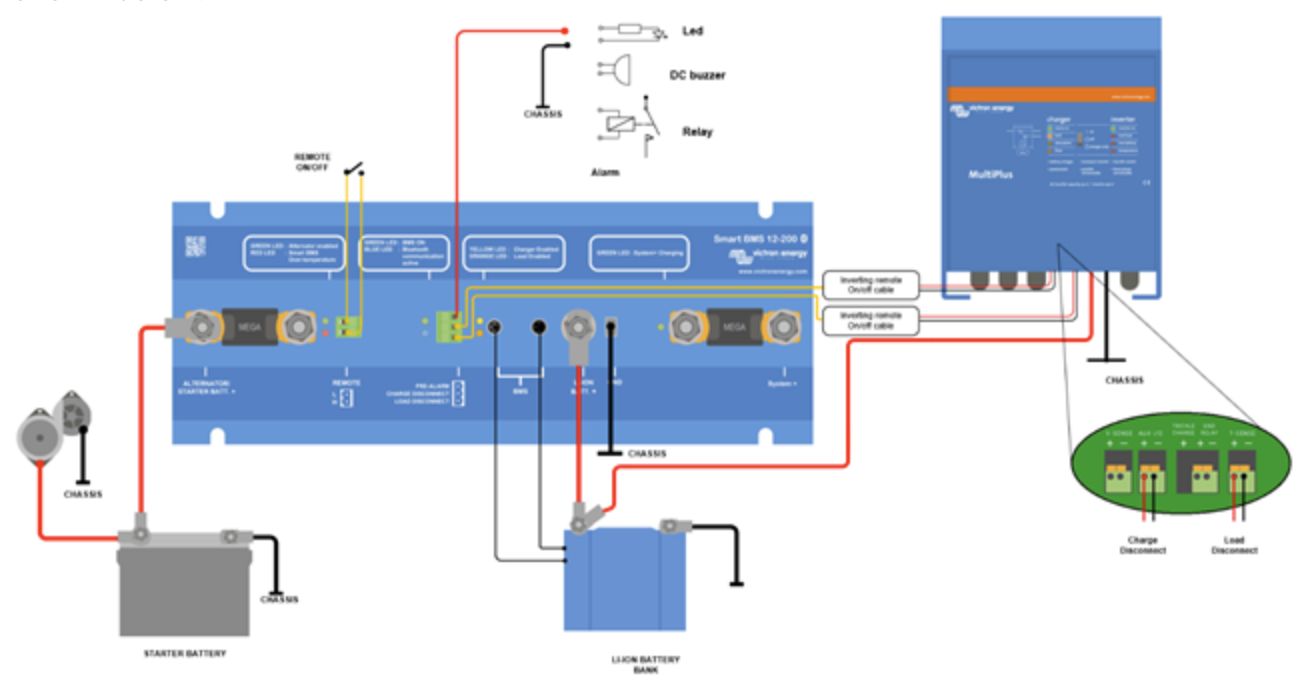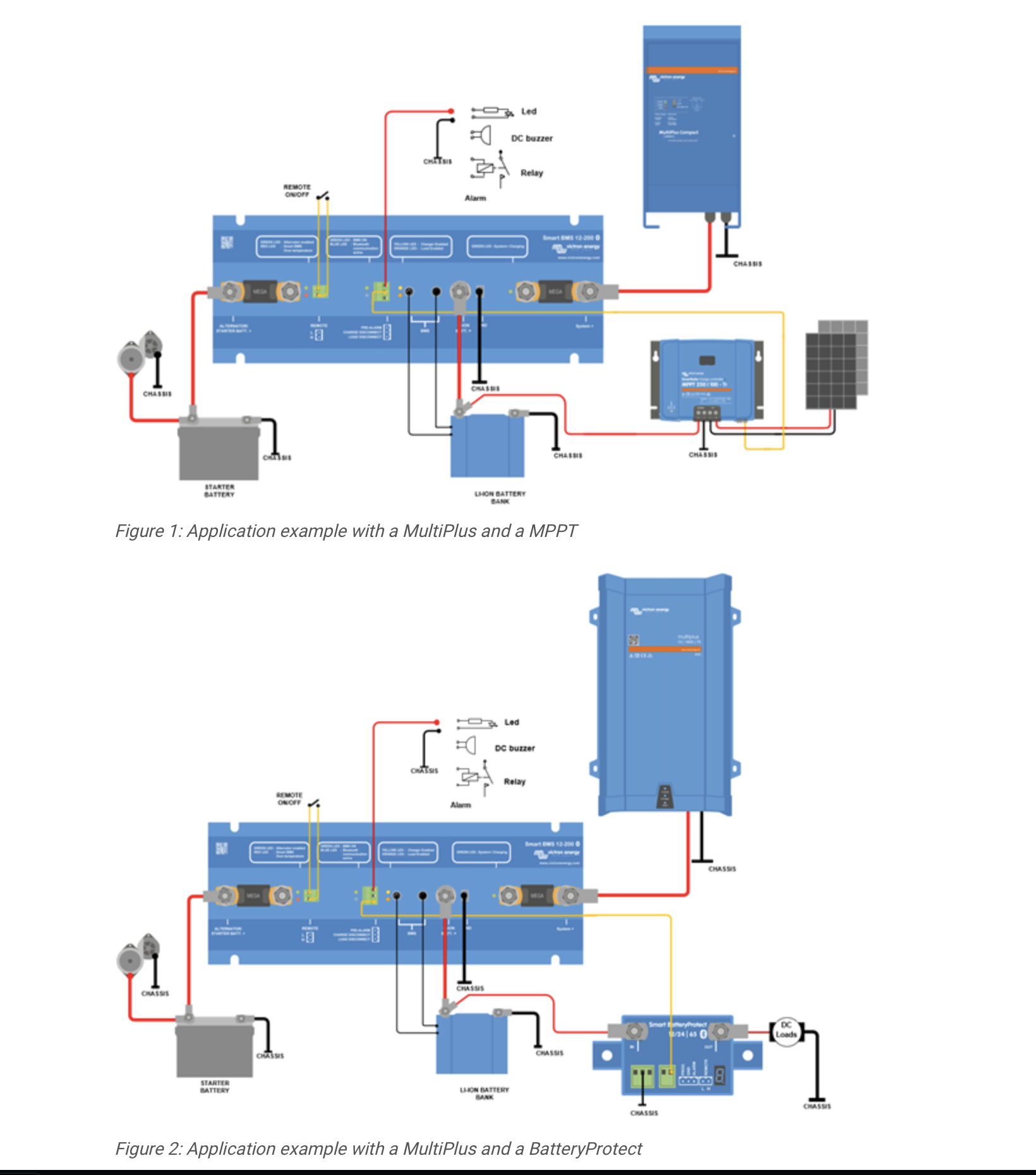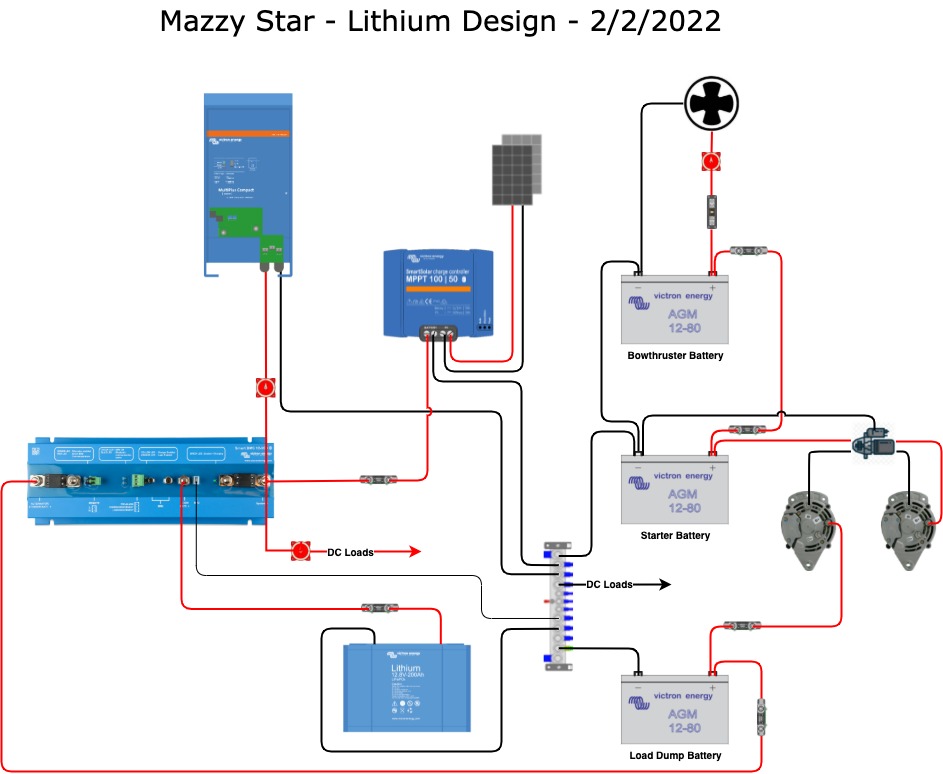I have a setup with a Multiplus 12/1600/70 and a Smart Solar 100/30 MPPT which I am planning to convert to lithium using Smart Lithium batteries and a Smart BMS 12/200. My question is about the System+ port on the Smart BMS. The documentation is unclear about how use the System port, and where charge sources should be connected. The manual shows the following two setups, which would seem to contradict each other. Which is correct? If I connect the charge sources to the System+ port, do I need to connect the load disconnect to the charge sources, or will the System+ port handle the load disconnect?
In the appendix, the manual says:
"If These MultiPlus models are not connected directly to the System+ port, they can also be controlled from the Load Disconnect and Charge Disconnect outputs by using the Smart BMS CL 12/100 to MultiPlus cable"
It is unclear in the manual which setup one should choose or what the benefits and drawbacks of each are. It is also unclear whether I can connect other charge sources such as the MPPT to the System+ port with no load disconnect. This is important as my MPPT does not have a remote disconnect port, and the VE.Direct port is already connected to a Cerbo GX.
Manual: https://www.victronenergy.com/media/pg/Smart_BMS_12-200/en/system-examples---smart-bms.html
Example 1 - Multiplus connected to System+ port, no remote disconnect:

Example 2 - Multiplus connected to batteries w/remote load disconnect




